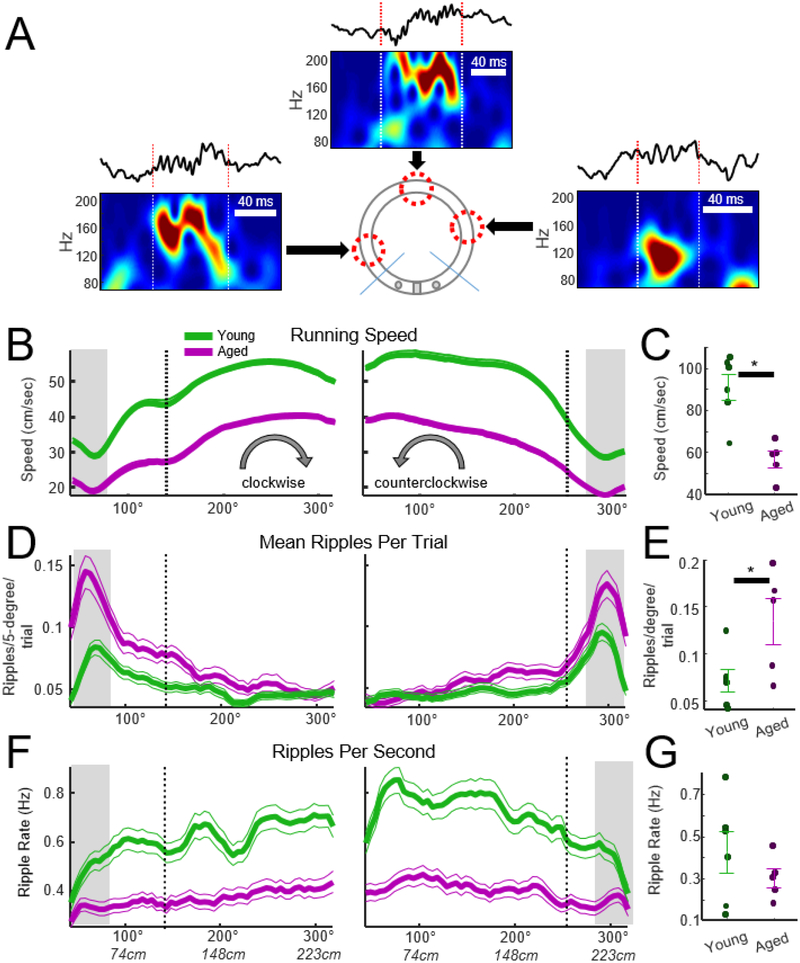Figure 3.
Waking ripples during the spatial eyeblink behavior. A) Examples of waking ripples from an aged rat observed during conditioning. Arrows point to the location on the track where the ripple occurred. The waveform and wavelet spectrogram are presented for each ripple. B) Running speed for aged and young rats outside of the reward zone. Running speed in both aged and young rats ‘dipped’ at the start of each trial and increased until animals approached the reward zone (n = 146 sessions young, n = 119 sessions aged). The x axis indicates the linearized position of the animal in degrees. Vertical dashed lines indicate the location where animals received an eyelid shock on 50% of trials. Shocked trails were eliminated from the averages so that ripple counts could be assessed without contamination from electrical artifact. C) Running speed at the start of each trial, with the start indicated by the gray horizontal bars in B, was slower for aged rats (t-test, t = 5.7, p = 0.005, d = 2.2, n = 5 aged, n = 6 young rats, error bars = SEM). D) Average number of ripples per trial during track running. E) To assess whether the incidence of ripple events differed between aged and young animals, the average number of ripples per trial was computed at the start of the clockwise and counterclockwise journeys. The average number of ripples per trial was larger in aged animals (t-test, t = −2.4, p = 0.039, d = −1.4, n = 5 aged, n = 6 young). F) To determine if the increased number of ripples in aged rats was due to their slower running speed, the ripples per trial were normalized by the total time spent at each spatial location, resulting in a measure of ripples per second. G) The mean ripple rate was not different between aged and young animals at the start of each trial (t = 1.1, p = 0.50), suggesting that the increase in the incidence of ripples at the start of each journey observed in D was due to animals moving more slowly.

